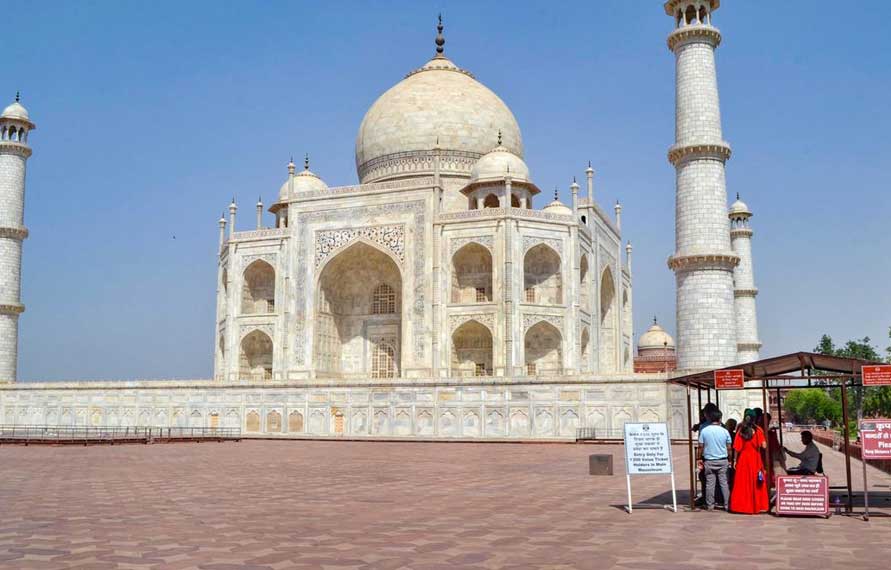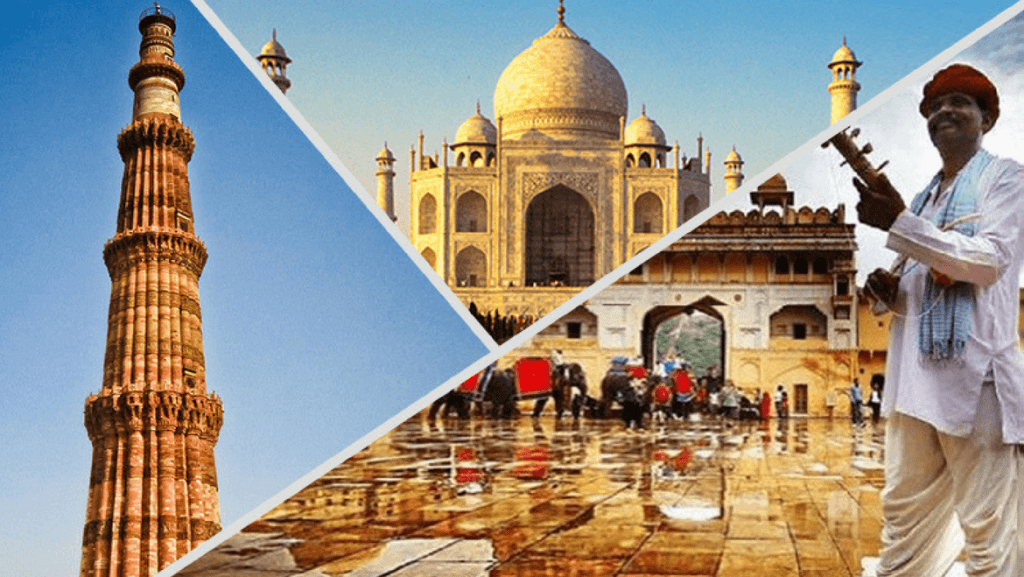Why India's Golden Triangle Is The Perfect Itinerary For First-Time Travelers
![]()
As a journalist expert, I'm delighted to present a comprehensive guide to why India's Golden
Triangle Tour packages is the ultimate itinerary for first-time travelers. This blog post is tailored to provide detailed insights into every facet of the Golden
Triangle experience, from historical landmarks to cultural delights, ensuring a seamless and enriching journey. Let's delve into the enchanting world of Delhi, Agra, and Jaipur – the three gems that form India's iconic Golden Triangle.
India Golden Triangle
![]()

The allure of India's Golden Triangle is undeniable, making it a prime choice for first-time travelers. This captivating journey encapsulates
the cultural essence, historical grandeur, and vibrant diversity of India, offering an unparalleled introduction to the country's rich heritage. From bustling markets to majestic palaces, the Golden Triangle presents a kaleidoscope of experiences that promises
to leave an indelible mark on every traveler's heart.
Delhi: Where Heritage Meets Modernity
![]()

Historical Landmarks: Delhi, the
pulsating heart of India, is a canvas painted with historical landmarks that bridge the gap between past and present. Wander through the colossal walls of the Red Fort, stand in awe at the grandeur of India Gate, and marvel at the architectural marvels of
Humayun's Tomb and Qutub Minar.
Cultural Experiences: Dive into
the rich cultural tapestry of Delhi by exploring the bustling bazaars of Chandni Chowk, where the aroma of street food and the allure of traditional crafts beckon. Immerse yourself in spirituality at the Lotus Temple, a serene oasis in the midst of urban hustle.
Local Cuisine: Indulge your taste
buds in Delhi's diverse culinary scene. From the tangy delight of chaat to the fragrant biryanis, Delhi's street food is a journey in itself. Don't miss the opportunity to savor the sumptuous flavors of butter chicken and kebabs.
Agra: The Epitome of Love
![]()

Taj Mahal and Beyond: Agra's crowning
jewel, the Taj Mahal, is a monument of eternal love and architectural brilliance. Witness the play of light on its ivory-white marble façade during sunrise or sunset for an ethereal experience. Explore the Agra Fort, a UNESCO World Heritage Site that offers
a glimpse into the lives of Mughal emperors.
Rich Heritage: Agra's heritage extends
beyond the Taj Mahal. Visit Fatehpur Sikri, an ancient city with a blend of Mughal and Persian architecture. Dive into Agra's history at the Taj Museum, where artifacts and stories await.
Insider Tips: For a unique perspective,
visit Mehtab Bagh across the Yamuna River for a serene view of the Taj Mahal. Engage with local artisans to witness the intricate art of marble inlay work.
Jaipur: The Pink City

Majestic Forts and Palaces: Jaipur, often referred to as the Pink City, boasts majestic forts and opulent palaces. Explore the Amber Fort, where
a ride on an elephant's back transports you to the era of Rajput kings. The City Palace and Hawa Mahal are architectural marvels that narrate tales of regal extravagance.
Traditional Arts and Crafts: Dive
into Jaipur's artistic heritage by visiting local markets that brim with textiles, jewelry, and handicrafts. The Johari Bazaar is a treasure trove for jewelry enthusiasts, while the Bapu Bazaar offers vibrant textiles and souvenirs.
Immersive Cultural Encounters: Experience
the magic of Rajasthani culture at Chokhi Dhani, a village-style resort that offers traditional cuisine, dance, and music. Engage with local artisans and witness the creation of traditional crafts.
Why Choose the Golden Triangle?

The Golden Triangle typically refers to a specific geographic region that forms a triangle between three major cities in India: Delhi, Agra,
and Jaipur. This area is renowned for its historical, cultural, and architectural significance, making it a popular destination for travelers. Here's why you might choose to explore the Golden Triangle:
Rich Cultural Heritage: The three
cities of the Golden Triangle showcase India's diverse cultural heritage. Delhi, the capital, has a mix of ancient and modern attractions, including historical sites like the Red Fort and Humayun's Tomb. Agra is home to the world-famous Taj Mahal, a symbol
of love and architectural beauty. Jaipur, known as the Pink City, boasts majestic forts, palaces, and a vibrant local culture.
Cultural Diversity: These cities
showcase India's rich cultural tapestry. You'll experience a blend of traditions, cuisines, festivals, and lifestyles that reflect the country's diversity. From bustling markets to traditional dance performances, the Golden Triangle is a sensory delight.
Architectural Grandeur: The architecture
in the Golden Triangle is a testament to India's historical grandeur. The blend of Mughal, Rajput, and colonial influences has resulted in awe-inspiring palaces, forts, temples, and monuments that tell tales of the past.
Local Markets: Each city in the
Golden Triangle has its own unique markets where you can shop for handicrafts, textiles, jewelry, and other souvenirs. Delhi's bazaars, Agra's marble workshops, and Jaipur's gemstone markets offer a wide range of items.
Rich Cuisine: Indulge in a variety
of Indian cuisines, each with its own distinct flavors. From street food to fine dining, the Golden Triangle offers a gastronomic adventure that caters to different tastes.
Ease of Travel: The cities are well-connected
by road and rail, making travel between them relatively convenient. This accessibility makes the Golden Triangle an excellent choice for travelers looking to explore a significant portion of North India.
Local Experiences: Engage in activities
like camel rides, cultural shows, and heritage walks that offer insights into the local way of life and traditions.
Conclusion
The Golden Triangle is more than just a travel itinerary; it's an immersive expedition that introduces first-time travelers to the heart and
soul of India. With its historical landmarks, cultural treasures, and enriching experiences, the Golden Triangle is the perfect beginning to your journey through India's diverse heritage. Whether you're captivated by the Taj Mahal's grandeur, enticed by Delhi's
markets, or awed by Jaipur's forts, this itinerary ensures that your first encounter with India is nothing short of unforgettable.
FAQs about India's Golden Triangle
Q1: Is it safe to travel between these cities?
A1: Yes, the cities on the Golden Triangle route are well-traveled and generally considered safe for tourists.
Q2: What's the best time to embark on this journey?
A2: The best time is during the cooler months of October to March, avoiding the scorching summer heat.
Q3: How do I travel between these cities?
A3: You can opt for trains, buses, or private tours. Trains are often efficient and provide a taste of local life.
Q4: Can I cover the Golden Triangle in a week?
A4: Yes, a week is sufficient to explore the major attractions of these cities.
Q5: Are there English-speaking guides available?
A5: Absolutely, many attractions offer guided tours in English to enhance your experience.